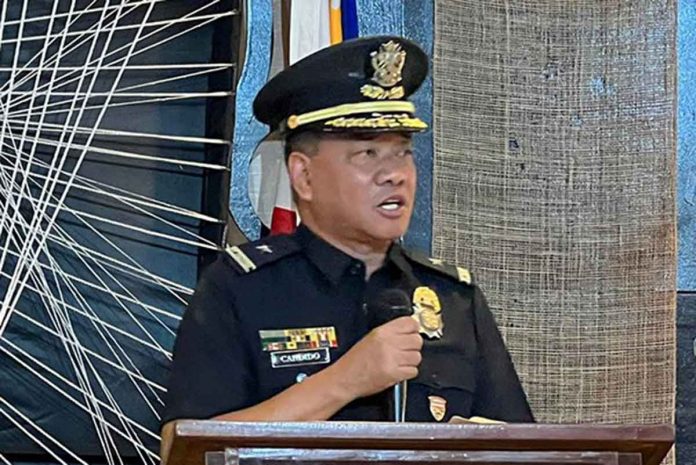
ILOILO City – To reduce the risk of another conflagration, the Bureau of Fire Protection (BFP) Region 6 will re-implement “Oplan Ligtas na Pamayanan” – a comprehensive fire prevention program launched in 2019 but temporarily suspended due to the coronavirus disease 2019 (COVID-19) pandemic.
BFP-6 director, Fire Chief Superintendent Jerry D. Candido, said since face-to-face activities have mostly resumed, they will restart the program in fire-prone barangays. There will be quarterly activities.
For the first quarter, the BFP will visit fire-prone barangays to help barangay councils come up with a Community Fire Protection Plan.
The plan will include, among others, a hazard map that determines the ingress (entry) and egress (exit), the congested parts, and obstructions.
Candido said the common problem for the BFP during a fire are the obstructions that prohibit fire trucks from further penetrating the fire scene; these include parked vehicles, houses overextending to the sidewalks, and cable wiring, among others.
He added that in the recent conflagration in barangays West Habog-Habog and San Juan in Molo district, where nearly 300 houses were razed by the fire, their fire trucks had difficulty navigating the area.
He also pushed for the installation of dry standpipe systems in fire-prone barangays.
“Una nga obrahan is road clearing, which can be done kon tuod-tuoron… And coordination sa electric cooperatives and telcos para mapataas ang cable wires. Isa pa ka option is the putting up of a dry standpipe system. In layman’s terms, amo ni ang tubo nga nagakamang sa dalan nga wala sang unod nga tubig para dira sa ulihi ibutang or sugpon sang bombero ang hose para makalab-ot (ang tubig) sa punta nga parte sang barangay nga indi masulod sang truck,” explained Candido in an interview with Panay News.
He encouraged barangay councils to help the BFP in clearing their communities of obstructions and also to create a Barangay Bantay Sunog or fire brigade, with the following functions:
* assist the BFP in the inspection and removal of fire hazards in the community and household, such as illegal electrical connections, street obstructions, flammable and easily ignitable piles of materials, and the like;
* assist the BFP in delivering the message of fire prevention through their activities.
* develop fire prevention programs and plans of action for the company or organization to address possible fire situations in the community; and
* evaluate necessary precautionary measures in the barangay;
The fire chief said BFP-6 is willing to offer training to fire brigade members.
For the second quarter, the fire bureau will focus on house-to-house visitations. They will inspect homes for hazards and electrical connections. Here, Candido appealed to house owners to be cooperative.
There will also be lectures and seminars, which in 2019 only a few attended.
The BFP’s strategy for this is to coordinate with national government agencies like the Department of Social Welfare and Development (DSWD), where they can conduct seminars at the same time the DSWD distributes assistance.
For the third quarter, BFP-6 will conduct simulation exercises in fire-prone barangays to make the people aware of the ingress and egress in their area in case of a conflagration.
And for the fourth quarter, the BFP will again have house-to-house visitations.
Here are the responsibilities of the BFP under Memorandum Circular No. 2019-40 by former Department of the Interior and Local Government secretary Eduardo Año who directed “Oplan Ligtas na Pamayanan” in all barangays nationwide.
* Assist the barangay councils in the crafting of the Community Fire Protection Plan, the conduct of its workshop, and the component field survey.
* Establish in every barangay a fire response database as mandated by the OPLAN, which is beneficial for the conduct of an effective fire operation.
* Designate a Bumbero sa Pamayanan who will assist the local barangay councils in implementing the various programs and component activities of the OPLAN.
* Assist the barangay council in organizing the Community Fire Auxiliary Group as well as provide them with adequate and relevant training.
* Evaluate the conduct of simulated fire drills and exercises using the prescribed methodologies of the Oplan./PN




